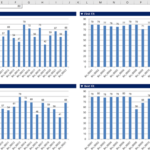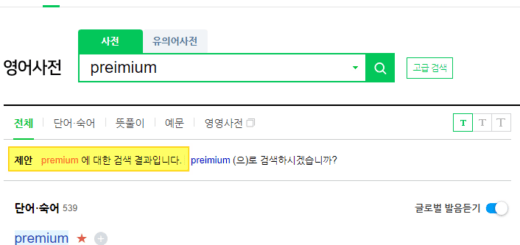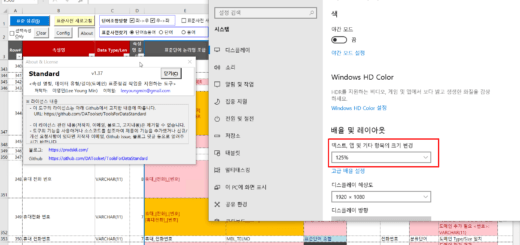Optimization of work distribution using one-dimensional bin packing algorithm_2.Algorithm(2)
2.6. Apply descending sort by Item size
So far, we have looked at the operation method and execution results of each algorithm of Next Fit, First Fit, Worst Fit, and Best Fit. The results are different when processing in random order when the size of the input data is not arranged in a certain order and processing in a sorted state. Since filling large-sized items first usually yields good results, you can think of a method of sorting items in descending order first and then processing them.
First, the input data and the data sorted in descending order are as follows.
# Input Data 26 57 18 8 45 16 22 29 5 11 8 27 54 13 17 21 63 14 16 45 6 32 57 24 18 27 54 35 12 43 36 72 14 28 3 11 46 27 42 59 6 186# Sort in descending order Input data 72 68 63 59 57 57 54 54 46 45 45 43 42 41 41 36 35 32 29 28 27 27 27 26 26 24 22 21 18 18 17 16 16 15 14 14 14 18 13 12Let's take a look at the results of running each algorithm with data sorted in descending order as input.
2.7. Next Fit with descending sort
The total space is 1,840 (size of each bin 80 * number of bins 23), the remaining space total is 488, and the space inefficiency is about 26.52% (488/1,840).
2.8. First Fit with Descending Sort
The total space is 1,440 (size of each bin 80 * number of bins 18), the remaining space total is 88, and the space inefficiency is about 6.11% (88/1,440).
2.9. Worst Fit with Descending Sort
The total space is 1,440 (size of each bin 80 * number of bins 18), the remaining space total is 88, and the space inefficiency is about 6.11% (88/1,440).
2.10. Best Fit with Descending Sort
The total space is 1,440 (size of each bin 80 * number of bins 18), the remaining space total is 88, and the space inefficiency is about 6.11% (88/1,440).
2.11. Comparison of algorithm application results
In the case examined above, except for Next Fit, which has the largest inefficiency, the results of the remaining space sum and space inefficiency of First Fit, Worst Fit, and Best Fit are all the same, and the items filled in each bin are configured differently.
For reference, the same result is a coincidence caused by the input data and constraints in this example. If the input data and constraints are different, the residual space sum, space inefficiency, item composition list of bins, etc. may be different.
The comparison of the unsorted and sorted results is as follows.
▼ Next Fit


▼ First Fit


▼ Worst Fit


▼ Best Fit


Below is the quantitative information yielded from the execution of each algorithm.
| algorithm | Item | before sorting | After sorting | compare |
| Next Fit | number of comparisons | 44 | 44 | no change |
| total space | 1,840 | 1,840 | ||
| Sum Remaining Space | 488 | 488 | ||
| space inefficiency | 26.525 | 26.525 | ||
| First Fit | number of comparisons | 330 | 448 | The number of comparisons increased, but space inefficiency decreased and improved |
| total space | 1,520 | 1,440 | ||
| Sum Remaining Space | 168 | 88 | ||
| space inefficiency | 11.05% | 6.11% | ||
| Worst Fit | number of comparisons | 465 | 643 | |
| total space | 1,680 | 1,440 | ||
| Sum Remaining Space | 328 | 88 | ||
| space inefficiency | 19.52% | 6.11% | ||
| Best Fit | number of comparisons | 428 | 643 | |
| total space | 1,520 | 1,440 | ||
| Sum Remaining Space | 168 | 88 | ||
| space inefficiency | 11.05% | 6.11% |
The number of comparisons in the table above is an approximate measurement by the Excel VBA-based tool, which will be introduced next. Looking at the above, you can see that the result of Bin Packing after sorting in descending order by item size reduces space inefficiency and is more densely packed. Through this, it can be seen that sorting first and applying the algorithm can obtain more optimized results.
Best Fit is not always optimal. It is advisable to examine the results of each algorithm run and select the optimal result for the situation at the time.
So far, we have looked at the Bin Packing algorithm in detail. Next, we look at tools that implement this algorithm.
<< List of related articles >>
- Optimization of work distribution using one-dimensional bin packing algorithm_1.Overview
- Optimization of work distribution using one-dimensional bin packing algorithm_2.Algorithm (1)
- Optimization of work distribution using one-dimensional bin packing algorithm_2.Algorithm(2)
- Optimization of work distribution using one-dimensional bin packing algorithm_3.Implementation (1)
- Optimization of work distribution using one-dimensional bin packing algorithm_3.Implementation (2)
- Optimization of work distribution using one-dimensional bin packing algorithm_4.Attachment
- One-dimensional Bin Packing Tool Recent Changes (as of March 21, 2021)
- Work distribution optimization tool using one-dimensional bin packing algorithm Full Contents, Download






















Hello, I am looking at data related to bin packing. Can I share some images?
Yes, it's okay.
Please leave a comment telling us where you are sharing it, and please be sure to indicate the source.